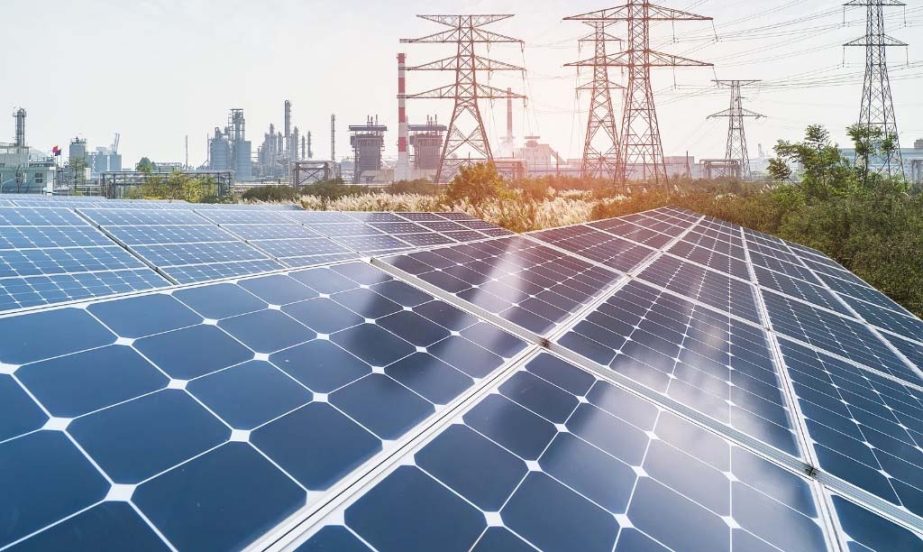
UNB, Dhaka :
In power generation, reducing overheads is usually very difficult, particularly when the global crude oil prices are on a firm upward trend.
But migration to low-cost solar energy could help the state-run liquid-fuelled power plants in Bangladesh offset the financial stress caused by a costlier crude.
This suggestion has come from key players in the renewable energy industry, who cite the recent rise in diesel prices to pester the government to invest heavily in renewable energy sources.
In fact, the government increased the diesel rates to Tk 80 a litre from Tk 65 per litre in November last year, while the furnace oil prices remained static at Tk 60 per litre.
As per the 2020-21 annual report of the Bangladesh Power Development Board (BPDB), a whopping Tk 779.40 crore was spent on diesel to generate electricity from its own liquid-fuelled power plants.
The production cost of electricity from liquid fuel in rental and quick rental power plants as well as from independent power producers (IPPs) and small independent producers (SIPPs) is about Tk 16.49 a unit, on an average, according to the report.
On the other hand, the BPDB produces 7.4 MW solar power from its own Kaptai plant whose production cost comes to Tk 5.7 a unit. Similarly, it buys power from a number of small-scale solar plants at a rate of Tk 10.36 to Tk 16.11 per unit.
The country’s grid-connected solar power generation capacity, as per the report, is 129 MW (0.59%) — but the BPDB generated 158 million units (0.20%) in 2020-21.
According to the report, the country’s overall power generation capacity is 25,235 MW. Of this, the grid-connected generation is 22,031 MW that comes from a total of 146 units at different power stations across the country while 3,204 MW is from off-grid sources.

Of the off-grid generation, 2,800 MW is captive installed in different private industries while 404 MW is coming from off-grid solar systems that are not counted in the BPDB’s statistics.
As per the BPDB statistics, out of the 146 power-generation units, 57 are public sector having a generation capacity of 10,146 MW (46% of the total generation capacity) while the remaining 88 are private sector with a generation capacity of 9,481 MW (43%) and one is a joint venture of 1244 MW (6%). Beyond this, the government also imports 1,160 MW (6%).
Of the private sector, 59 are IPPs (8042 MW), 13 SIPPs (350 MW), 12 rentals and quick rentals (1,089 MW).
As per the BPDB report, the country generated a total of 80,423 million units (kilowatt hours) of electricity throughout the fiscal — of which the board as a single buyer purchased a total of 39,059 units from IPP, SIPP, rental and quick rental power plants (at Tk 7.745 per unit) spending Tk 31,065.59 crore while the remaining units came from public sector plants.
Many experts believe that following the rise in diesel prices, the electricity-production cost in liquid fuel-burnt plants will go up and may cross Tk 20 per unit.
Munawar Misbah Moin, president of the Solar Module Manufacturers Association of Bangladesh (SMMAB), said the government can now easily replace the costly rental and quick rental power plants with solar energy “as there is a clear indication that liquid fuel prices will go up in the days to come”.
“Many countries, including neighbouring India, are now emphasising on renewable energy from a climate change perspective, which Bangladesh should follow by setting up more solar power plants that are very environment friendly,” he told UNB.
Dipal Chandra Barua of the Bangladesh Solar & Renewable Energy Association (BSREA), said that solar energy not only plays a vital role in the improvement of the environment but also reduces the dependence on imported fossil fuel.
“It will be very easy to generate 5,000 MW of electricity from solar power if the government arranges land in char (island) areas on a lease of 25 years. It will further reduce the cost of power generation from solar energy,” he said.

